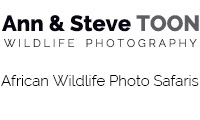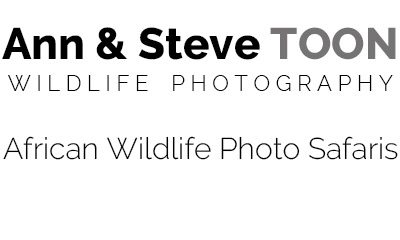Dark galaxies spinning, an impressionist painter’s palette, green soup seasoned with Himalayan salt plus swirls of cream, pink sprinkles across a frosted cake, a mad chart-maker’s take on exotic new territories… this is how you constantly compute the changing vistas below.
Imaginations on overdrive, our guests are photographing huge flocks of flamingoes soaring above the shape-shifting Kenyan soda lakes of Magadi and Natron from a helicopter with the doors off. The experience is fabulous, thrilling, other-worldly and surreal. Words don’t do it justice.

Every hour-long flight (guests did two flips each during the trip) is magical, literally taking your wildlife photography to dizzying new heights. Beneath you the views are kaleidoscopic. You drink in the diminutive world below like a drone as a myriad, multi-coloured shapes – organic, abstract, geometric – are intersected and overlaid with the flight patterns of some of the planet’s most photogenic birds.

Setting out from the helipad in camp to these soda lakes, the sparsely populated lands of the little-touristed hidden gem that’s the Olkirimatian conservancy where our safari is based are spread out like a map. The landscape is pock-marked with tiny circles – the neat, rustic homesteads of local pastoralists – some of whom we will later meet.

Threads unravelling from these settlements are their goats, cattle and sheep, closely guarded by the odd solitary figure in red, the herders. There are ribbons of game, including zebra and wildebeest, and here and there the odd elephant or giraffe. Behind us among the neat green-grey folds of the escarpment, our lodge is perched on a distant hill. When we launched from there moments earlier it was as if we were a raptor swooping from the cliff top.

You might expect such amazing and novel aerial viewpoints to be the highlights of a photo trip, but when our guests weren’t strapped in safely and soaring through the skies, they were ensconced in specially constructed night hides exploiting not only front-lit views with reflections of the nocturnal wildlife that pitched up, but wonderfully atmospheric backlit versions too.
We used two such hides during our stay, each close by, but at different lodges with differing habitats and subjects. More hides are due to come on stream for our future visits to this region, ramping up the photographic possibilities even further.

A testament to the potential on offer at these blinds was the fact that one of our group’s first images soon after dark at the Lentorre night hide was of a caracal, top prize for any wildlife photographer given they are stunning creatures and rare to see. Unbelievably this female visited not once but twice in the night, giving our photographers scope to get wonderful shots of her frontlit and then, more artfully, rimlit as we controlled the lighting choices carefully from inside the hide.

Other nocturnal species photographed here included genet and civet and our guests were able to capture some great close up shots and dramatic low-key images plus reflections.

The wildlife at the Shompole Wilderness night hide (the other hide we made use of) kept our photographers busy throughout the night with a constant stream of subjects from late afternoon to when we were collected for breakfast. The new backlighting system there (installed since our previous visit) worked very well, enabling us to get eerily atmospheric shots of buffalo, hyena and giraffe. We have deliberately selected a slot in our timetable for this trip at the height of the dry period, so the dust the animals kick up at this hide maximises the mood in any backlit pictures.

Further nocturnal treats for both groups in this hide were the lions who joined us for drinks on two occasions enabling everyone to get some great shots. One group got a cherry on top when these felines turned up with their little cubs in tow. And while all our photographers returned from the experience somewhat bleary-eyed, their haul of winning shots was more than sufficient compensation, featuring dark-time visits from a curmudgeonly bull elephant, the aforementioned lions, several giraffe, hyenas, civet, whitetailed mongoose, striped hyena and a very relaxed Verreaux eagle owl to name just a few. Daylight sessions bookending the nocturnal photography at the Shompole hide were also action-packed featuring plains game, a variety of birds from tiny finches to Kori bustards and the wonderfully entertaining antics of a large troop of Olive baboons.

Our novel photography in this unspoiled corner of Kenya did not stop there. Visits to Lake Natron at dawn to photograph the flamingoes at ground level produced some elegant, low- level images from our guests, including some excellent minimalist high key, slow-shutter and ICM images.

In a busy schedule there was also still time to visit and photograph the local community on the conservancy, helping us see in action how the rhythms of their traditional lifestyles and local conservation practices are successfully intertwined. Far removed from the artificial ‘cultural’ experiences of busier parts of Kenya, we were simply invited along to witness and photograph the village’s daily routines including the herders driving the cattle back into the enclosure (called a boma) inside the village fences for the night. One of our guests had thoughtfully brought a mobile printer and was able to give our hosts instant prints of all the pictures he’d taken. To make such a connection with people whose language and lives were a world away from our own, proved an unexpected and very memorable highlight.

But that’s not all. After a remarkable trip to this less-visited part of Kenya’s Great Rift Valley we said our goodbyes and put the perfect full-stop on the tour with four nights in Amboseli – world-renowned for its elephants and that imposing backdrop of Mount Kilmanjaro.

Of course, you can’t do a photo-trip as high-octane as this without excellent guides and ground staff who get things done – not forgetting a friendly and fun helicopter pilot (Ali) who quickly became one of our gang. Many thanks from us all to Johan and Samantha and the whole Shompole family (especially Nixon) and to Leonard, Gerald, the Kens and the team at Lentorre (not forgetting the tireless night hide spotters).
Big thanks as well to our guides (and friends) James and Mamai for more wonderful adventures in Amboseli. We really appreciate your hard work, great hosting and fun company throughout.

Finally thanks and ‘whoop, whoop’ to our lovely photo gang, to JA snr for thinking to bring that printer and the connections you made, to EA for the calm inspiration as ever and to JA jnr for giving us the ‘low-down’, to our resident birder SW, to pocket-rocket IGC and to our trusty weather-guru KC.
One last quick flip over the soda lakes anyone?















Leave a Comment